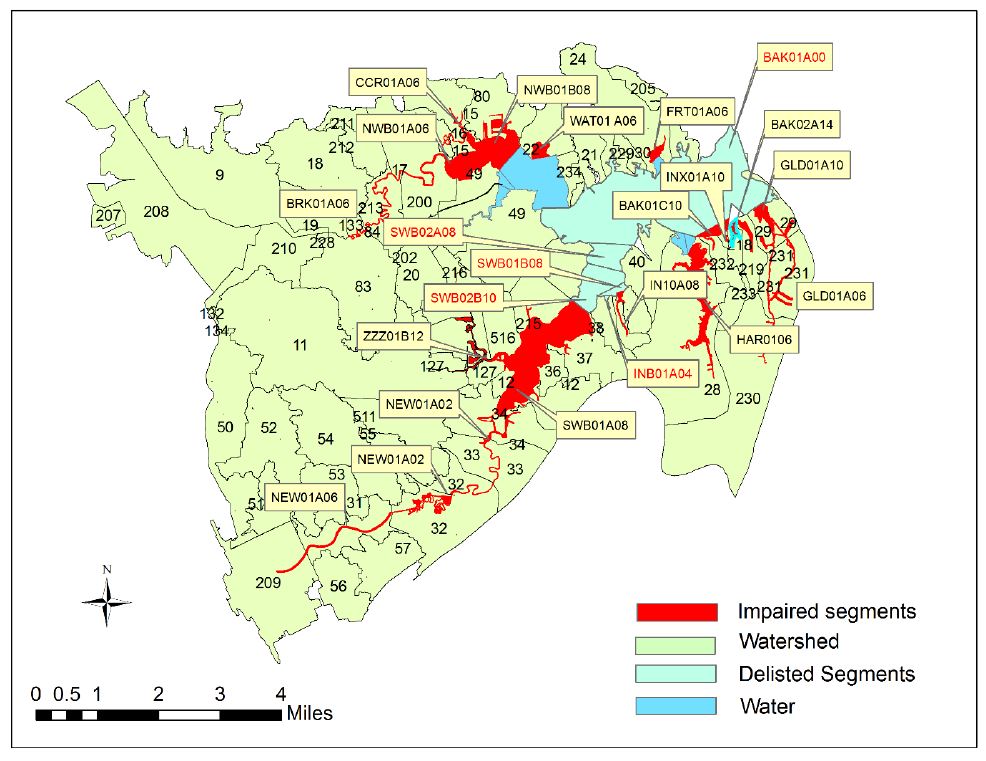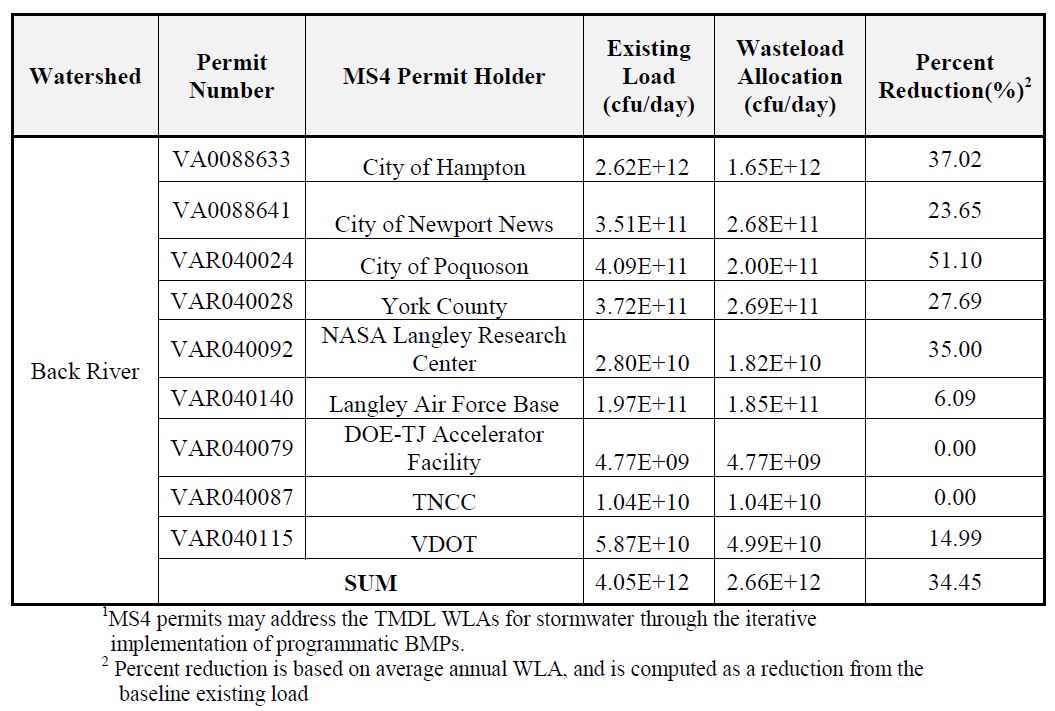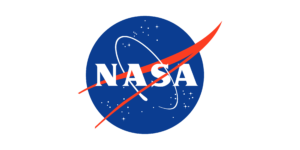Section 303(d) of the Clean Water Act and the United States Environmental Protection Agency’s (EPA) Water Quality Planning and Management Regulations (40 CFR Part 130) require states to develop Total Maximum Daily Loads (TMDLs) for water bodies that are exceeding Water Quality Standards (WQSs). TMDLs represent the total pollutant loading that a waterbody can receive without violating WQSs. The TMDL process establishes the allowable loadings of pollutants for a waterbody that the waterbody can receive without violating WQSs.
The Back River watershed is located along the Western Shore of the Chesapeake Bay, about 4 km south of the York River mouth. The Back River drains northeast to the mainstem of the Bay, which then drains directly southeast to the Atlantic Ocean.
Based on the Virginia 305(b)/303(d) Water Quality Assessment Integrated Report, Back River does not support its designated use of primary contact recreation (e.g., swimming and boating) and as a shellfish growing area due to highly elevated bacterial concentration. The Back River Bacteria TMDL Report has been developed to meet fecal coliform standards by establishing TMDLs for eighteen listed segments. These listed segments fail to meet the Water Quality Standards for bacteria (fecal coliform, enterococcus, and E. coli) and do not support the shellfish harvesting designated use.

Delineation of the Back River Watershed and Listing Status of Segments
Potential sources of bacteria in the watershed are MS4 regulated areas and nonpoint sources; including livestock, wildlife, pets, and human activities, failing septic systems, and Sanitary Sewer Overflows (SSOs).
Wasteload Allocations (WLAs)
The fecal coliform estimated loads and load reductions by MS4 permit are summarized in the table below:

Estimated Daily Loads and Load Reductions for Fecal Coliform by MS4 Permit
What does this mean for LaRC?
In accordance with the requirements of MS4 Permit #VAR040092, NASA Langley Research Center (LaRC) is required to develop an action plan to address bacterial contamination in the Back River. The Virginia Department of Environmental Quality (DEQ) established Total Maximum Daily Loads (TMDL) of Bacteria for the Back River in York County and the cities of Hampton, Poquoson, and Newport News, Virginia in 2018. The TMDL was approved by the Environmental Protection Agency (EPA) on February 9, 2018, and can be found on the DEQ’s website at https://www.deq.virginia.gov/water/water-quality/tmdl-development/approved-tmdls.
LaRC’s acreage represents 1.14% of the watershed, and is a relatively small player in this process since the Center has no residents, pets, septic systems, or livestock. The primary source of bacteria-related pollution from our Center is wildlife-related. This limits the amounts of actions that LaRC can take to address the issues. However, over the next several years LaRC will try to assist DEQ and improve water quality in the watershed. Increased education, outreach, and training are the main focus for reducing pollutants at LaRC.
LaRC’s Back River TMDL Action Plan can be found at*: NASA LaRC Back River TMDL Action Plan
LaRC also welcomes public comment on the Action Plan anytime.
What You Can Do at LaRC
1. Reduce food sources accessible to LaRC’s urban wildlife. Practice good housekeeping around LaRC’s dumpsters, picnic areas, and recreational areas.
2. Notify EMO or the Grounds Maintenance Contractor for removing animal carcasses from roadways so they can be properly disposed of.
3. Report issues or water quality concerns to the EMO.
What You Can Do at Home
Bacteria-related water quality issues aren’t unique to the Back River watershed. Many of Virginia’s waterways have some level of impairment. With many of LaRC’s employees living all over the Tidewater region, providing pollution prevention tips helps everyone.
1. Pick up after your pets. Pet waste, especially dog waste, is a significant contributor to the problem. Properly collect and dispose of pet waste.
2. Ensure that you don’t have leaking or failing septic systems in your home.
3. Report issues or illicit discharges to your local municipality.
For more information on LaRC’s TMDL program please contact Ande Remington at (757) 864-8332.


